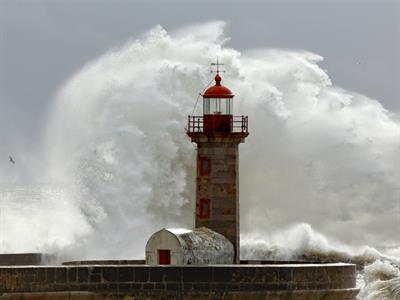PDF chapter test TRY NOW
1. Natural Disasters
Natural disasters are events that result from the Earth's natural phenomena. It is categorized into many types based on its occurrence.
Earthquake:
The sudden shaking of the earth at a place for a short period is called an earthquake. The duration of the earthquake may be a few seconds to some minutes.
The point where an earthquake originates is called its ‘focus’. The vertical point at the surface from the focus is called the ‘epicenter’.

Earthquake
Volcanoes:
Volcanoes are openings or vents where lava, small rocks, and steam erupt onto the earth’s surface. On land, volcanoes form when one tectonic plate moves under another.

Volcanoes
Tsunami:
Tsunamis are waves generated by earthquakes, volcanic eruptions, and underwater landslides.
Tsunami is a Japanese term that means "harbor wave".

Tsunami
Cyclones:
A low-pressure area that is encircled by high-pressure wind is called a cyclone. The warm moist air over the sea rises from the surface in an upward trend, resulting in the formation of the low-pressure zone over the surface.

Cyclone
Floods:
An overflow of a large amount of water, beyond its normal limits, especially in rainfed areas is called a flood.

Flood
Landslide:
The movement of a mass of rocks, debris, soil, etc., downslope is called a landslide. Landslides are a kind of "mass wasting," which means any down-slope movement of soil and rock under the direct influence of gravity.

Landslide
Avalanche:
A large amount of ice, snow, and rock falling quickly down the side of a mountain is called an Avalanche. In mountainous areas, avalanches are the most destructive natural threat to life and property.

Avalanche
Thunder and lightning:
Thunder is a series of sudden electrical discharges resulting from atmospheric conditions. This discharge results in sudden flashes of light and trembling sound waves which are commonly known as thunder and lightning.
